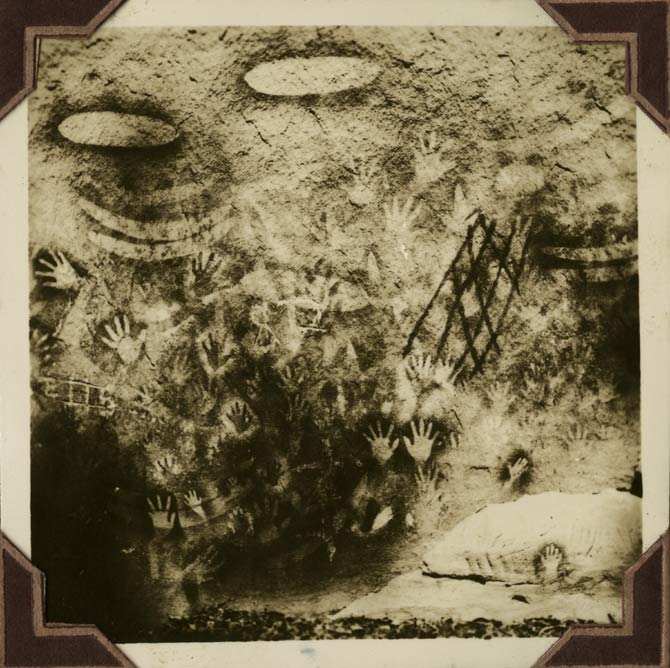 Rock painting, Carnarvon Gorge, 1938 - item 2 of 2
Rock painting, Carnarvon Gorge, 1938 - item 2 of 2
TLF ID R9210
This 1938 sepia photograph of a large Indigenous rock painting displays many stencilled hands, boomerangs, coolamons and a net-like shape, possibly representing a cycad, on a cliff wall in Carnarvon Gorge in central Queensland. A large rock near the wall shows some engraved art. The photograph was taken during the second European Carnarvon Range expedition and is part of an album.
